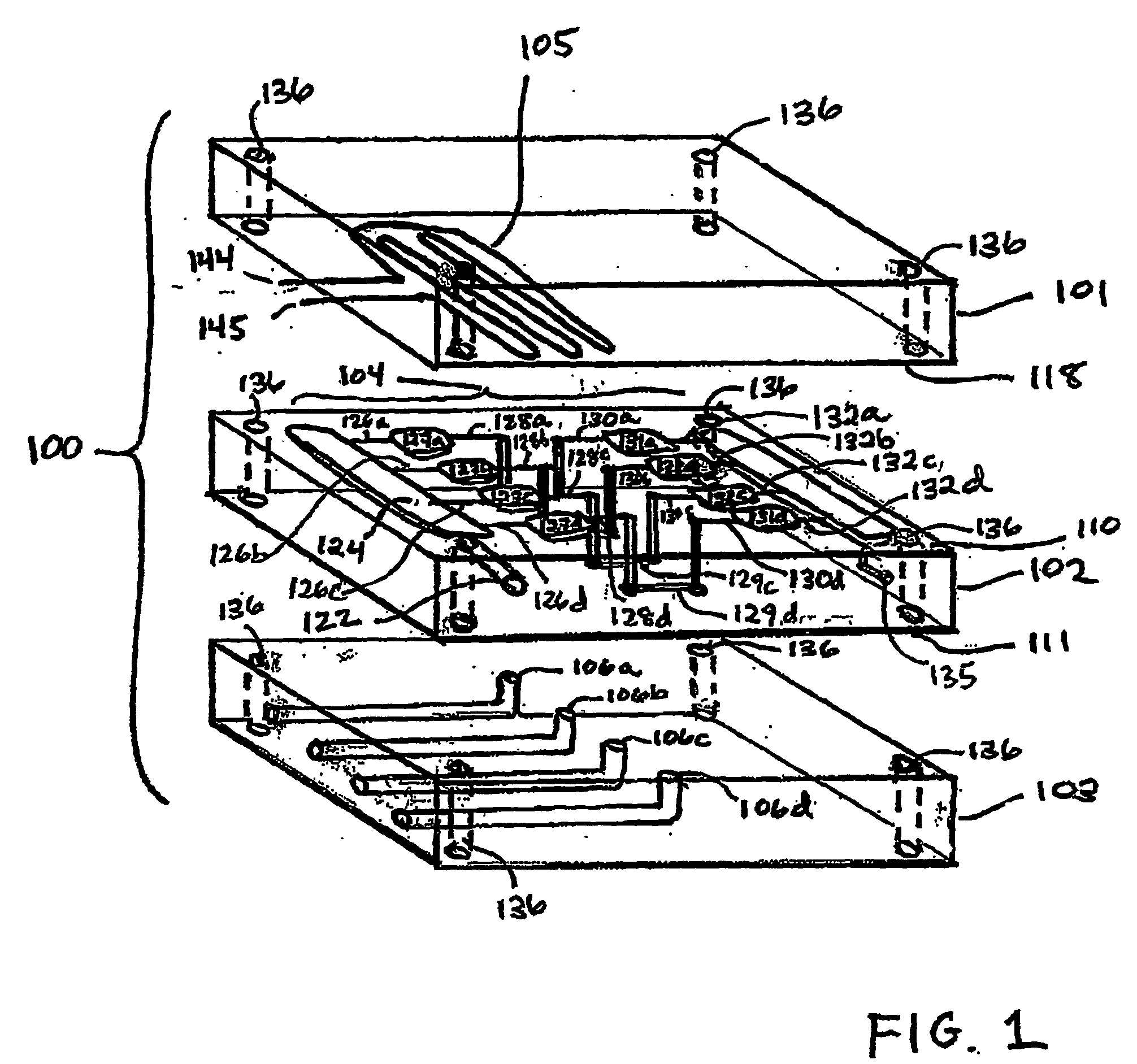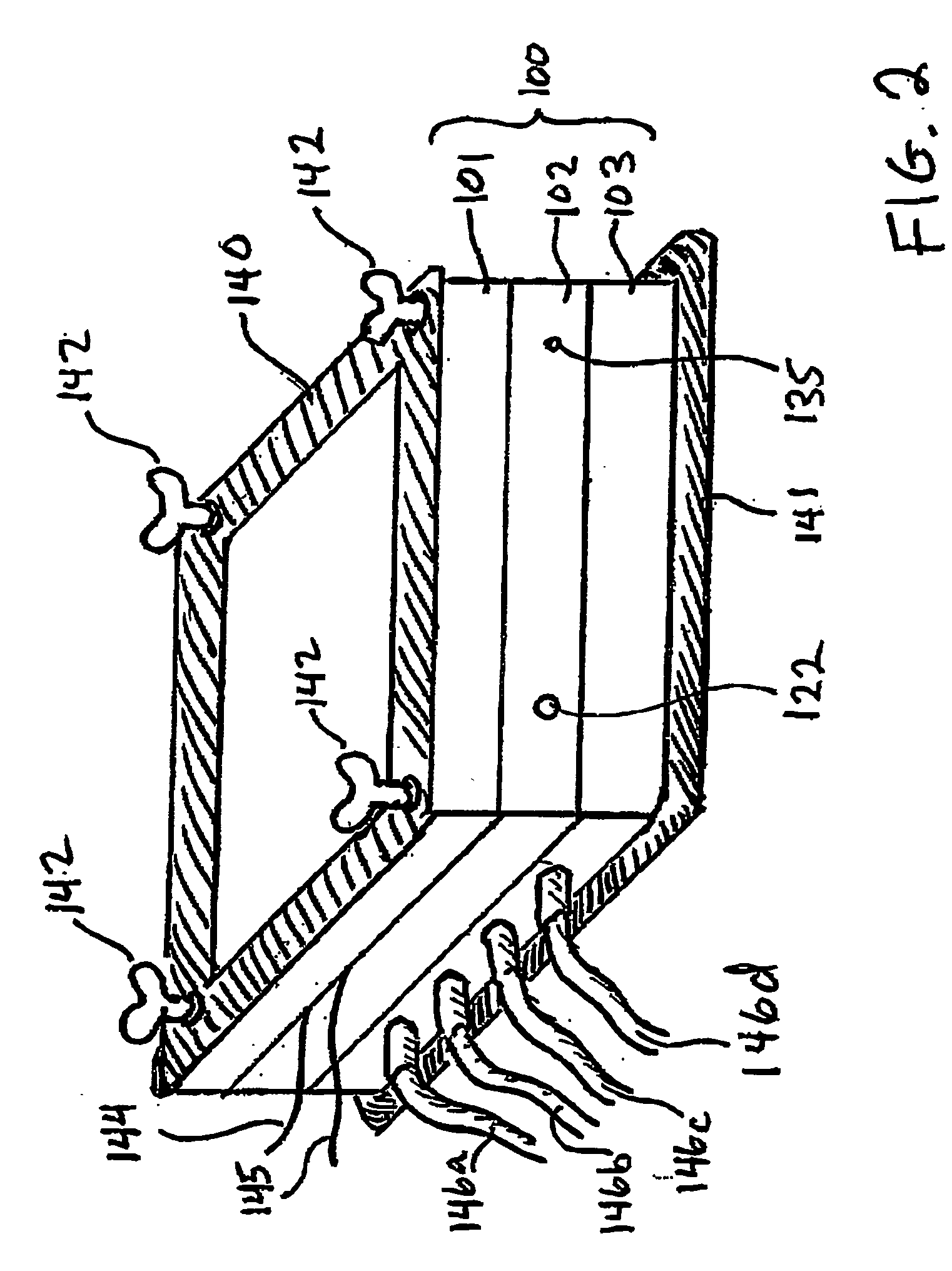Three-dimensional microfluidics incorporating passive fluid control structures
a microfluidic and fluid control technology, applied in the field of three-dimensional microfluidics incorporating passive fluid control structures, can solve the problems of affecting the flow rate of fluid, so as to achieve simple, effective and versatile control of fluid movemen
- Summary
- Abstract
- Description
- Claims
- Application Information
AI Technical Summary
Benefits of technology
Problems solved by technology
Method used
Image
Examples
example 2
[0097] FIG. 4 depicts a device that can be used for pre-processing sample and hybridization solutions for probe-oligo or probe-cDNA hybridizations on microarrays. Such a device could be used to identify suitable hybridization conditions prior to running a series of microarray hybridizations. Multiple hybridizations are performed on a single array under different conditions to minimize the slide-to-slide variation observed in microarray hybridization reactions, which obscures subtle differences in these gene expression experiments crucial in the drug discovery process. Sample can be dye-labeled and combined with hybridization solution in the device. Preparation of hybridization solutions having different concentrations of sample or other components can be carried out in the device. Salt buffer (SSC) and formamide are typical components of the hybridization solution that may be adjusted to maximize hybridization sensitivity. This is especially important when studying low abundance gen...
example 3
[0102] FIG. 3A depicts a three-dimensional microfluidic device 300 that performs serial dilution of a sample and delivers sample solutions and a series of appropriate reagents / reactants to a diagnostic surface 303 for the performance of a multiplexed immunoassay, e.g., an Enzyme Linked Immuno-absorbent Assay or "ELISA". The microfluidic circuit is designed to interface with a diagnostic surface 303 such as a slide or microtiter plate having small regions 3181-318e containing immobilized capture antibodies specific for a analyte(s) of interest The device has been simplified to more clearly illustrate its principles of operation. In practice, diagnostic surface 303 could contain a larger number of regions bearing capture antibodies, for example in an array made up of multiple rows, as opposed to a single row as depicted here. Device 300 would have a correspondingly larger number of microfluidic circuits to deliver sample and reagents to the larger number of regions bearing antibodies....
PUM
 Login to View More
Login to View More Abstract
Description
Claims
Application Information
 Login to View More
Login to View More - R&D
- Intellectual Property
- Life Sciences
- Materials
- Tech Scout
- Unparalleled Data Quality
- Higher Quality Content
- 60% Fewer Hallucinations
Browse by: Latest US Patents, China's latest patents, Technical Efficacy Thesaurus, Application Domain, Technology Topic, Popular Technical Reports.
© 2025 PatSnap. All rights reserved.Legal|Privacy policy|Modern Slavery Act Transparency Statement|Sitemap|About US| Contact US: help@patsnap.com



